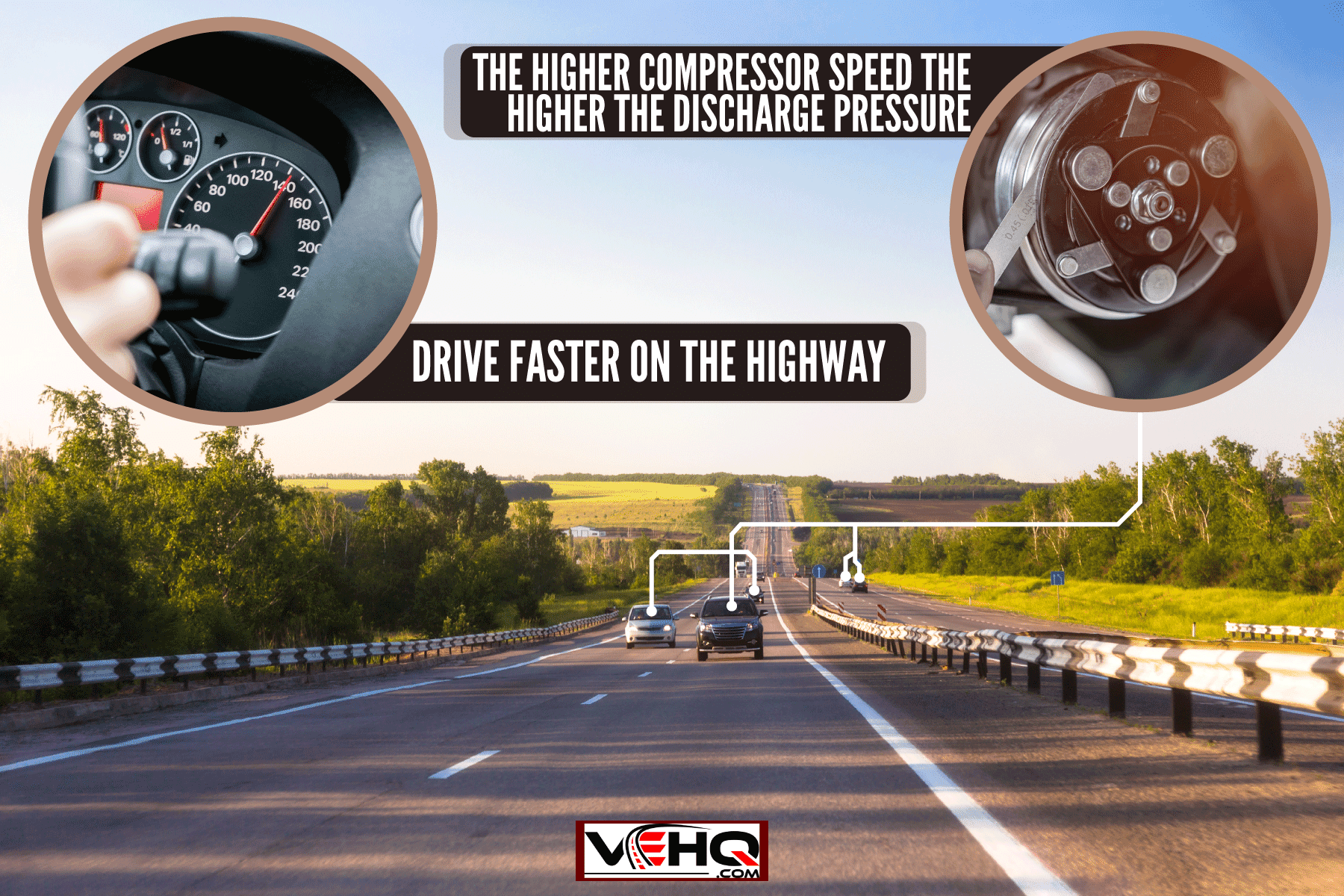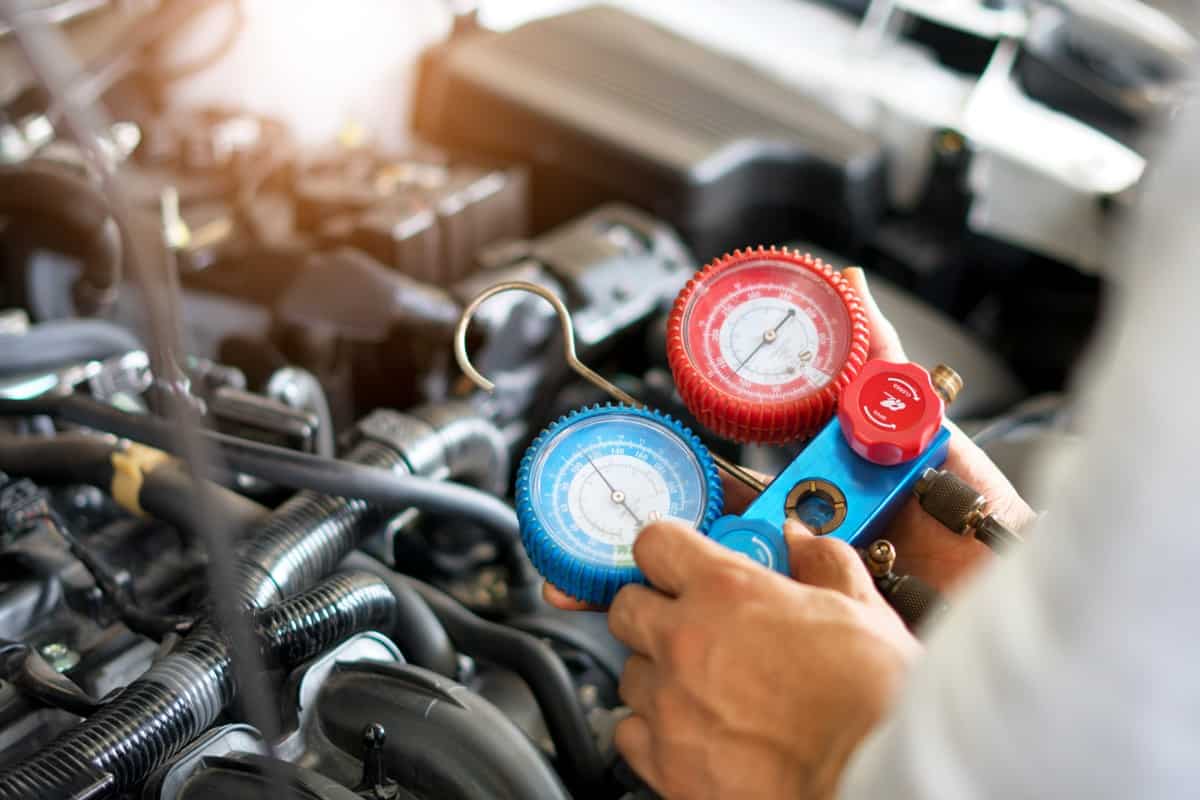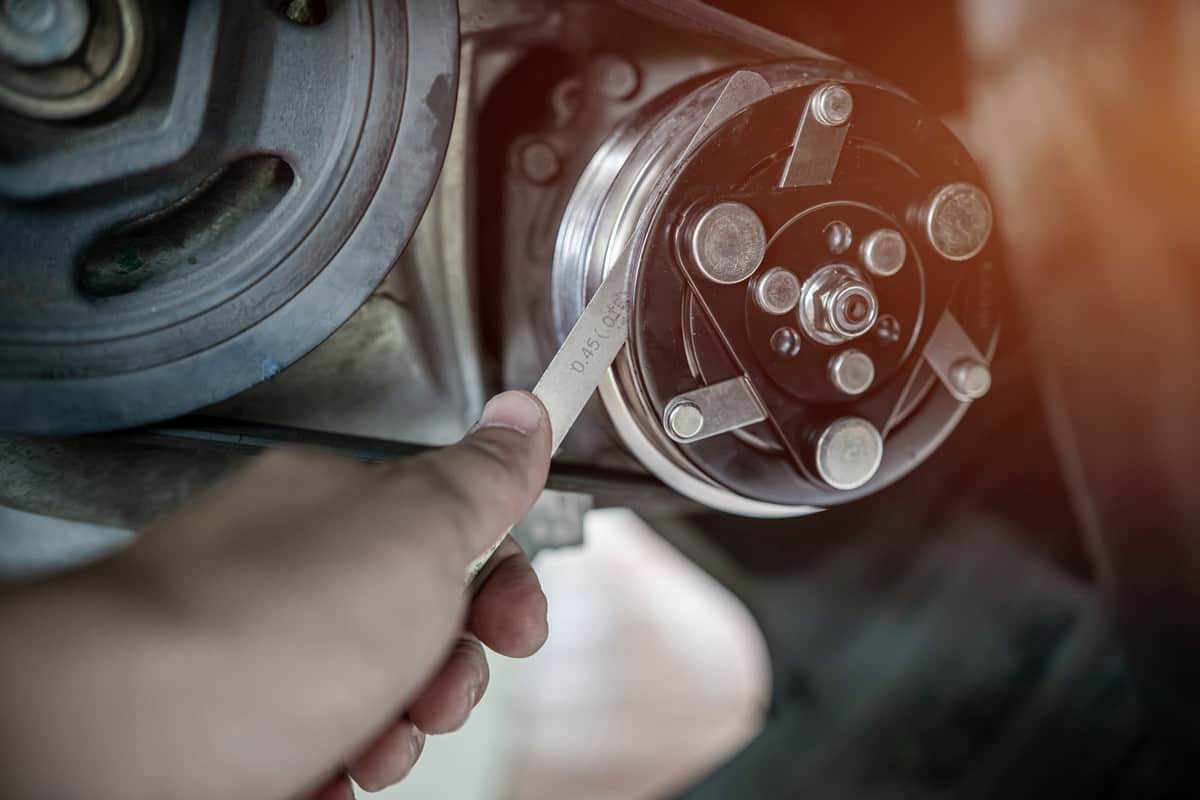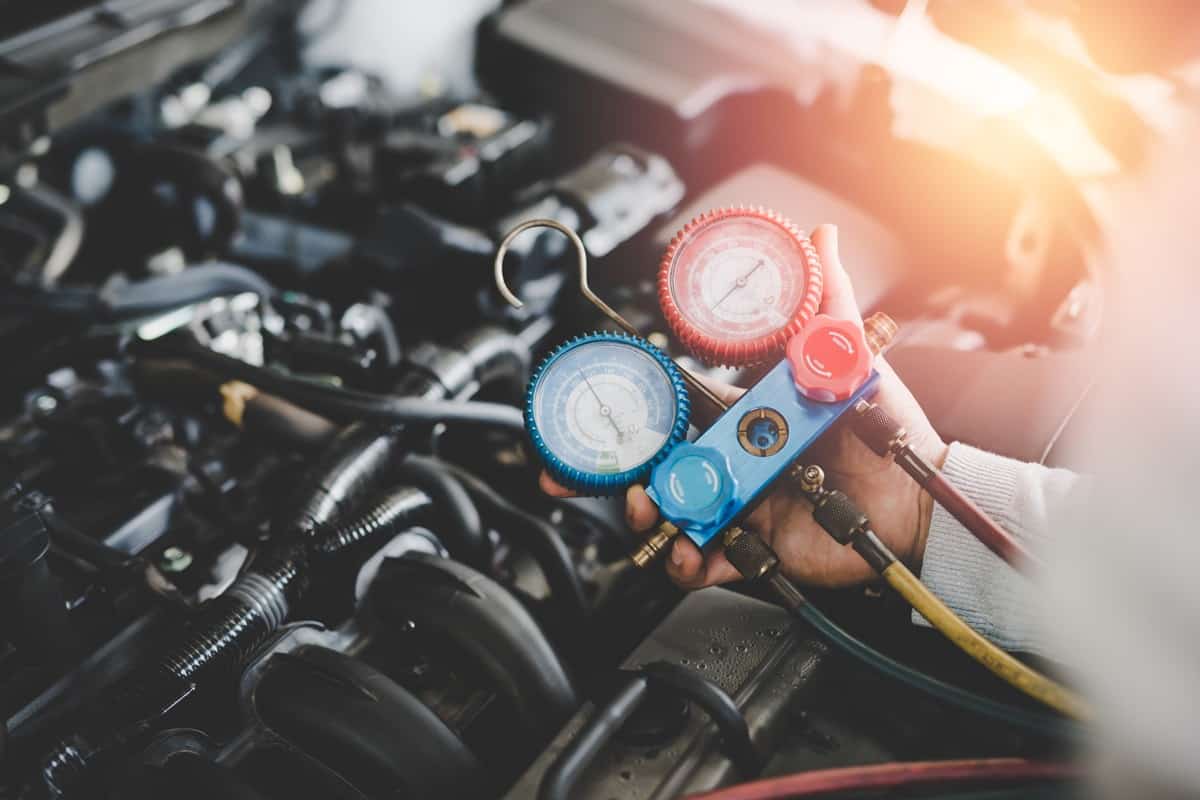Are you consistently losing AC cooling whenever you drive on the highway at a certain speed and do you want to know what is causing it? You’ve come to the right place, for we have researched this question, and we have the answer for you.
You need to drive your car at high speeds when you drive on the highway, and the compressor speed is dependent on engine speed. The higher the compressor speed, the higher the discharge pressure. However, the AC shuts down when it reaches the maximum allowable pressure to prevent damage to the AC’s system.
Confused? Don’t be. We will explain this in more detail in the succeeding sections.
Read on!

AC Shutting Down At High Speeds
A low refrigerant pressure will cause compressor damage. It will also cause your car AC to produce less cold air. A high refrigerant pressure, on the other hand, will deform the aluminum and will eventually create leaks in the coils.
To prevent both situations, modern car air conditioners include a pressure sensor in the circuitry to prevent undesirable pressure levels in the car AC. The switch in the pressure sensor turns off the compressor once the refrigerant pressure reaches certain levels—too high or too low.

Since compressor speed is dependent on engine speed, reaching a certain engine RPM (revolutions per minute) can cause the compressor to produce too much refrigerant pressure that is no longer safe for the AC.
This issue could happen if you had some work done on your car’s air conditioner—especially if you installed a new compressor. This can also happen if you had an engine swap to an engine that has a higher RPM limit than the stock engine.
If you installed a compressor that can produce refrigerant pressures that is more than what your system allows, then it will turn off at a certain speed. Similarly, if you have a new engine with a higher maximum RPM, then the engine will cause the compressor to spin faster at higher RPMs and produce refrigerant pressure that is more than what the system allows.

All compressors that are installed from the factory are rated to work with the factory-installed engine. The maximum RPM of a stock engine will match the maximum pressure output of a stock compressor and the limits of the system. Thus, this problem will not happen with stock parts on your car.
Why does my AC stop working when parked and work only while driving?

This issue is commonly due to one or a combination of two causes below:
Condenser Fans Do Not Turn On Automatically
Condenser fans transfer the heat from the gaseous refrigerant to the surrounding air. After the heat transfer, the refrigerant turns back to liquid form and travels to the expansion valve. It then moves to the evaporator coil.
Ideally, condenser fans automatically activate once the engine reaches the optimal operating temperature. However, several reasons can cause the condenser fan to fail to turn on.
Faulty Thermostat
This is not the thermostat that you have at home that controls your HVAC. Instead, this thermostat controls the flow of coolant from the engine to the radiator.
The coolant stays within the engine until it reaches the optimal operating temperature, passing through a bypass valve. Once the engine reaches the optimal operating temperature, the thermostat opens to allow the coolant to pass through and reach the radiator. The radiator ensures that the engine stays within the optimal operating temperature and never gets too hot.
A faulty thermostat can stay open. This will prevent the engine from reaching optimal operating temperature while parked because the radiator will constantly cool the engine.
If the engine doesn’t reach optimal operating temperature, the engine will never get hot enough to trigger the condenser fan.
To fix this issue, you will need to replace the thermostat.
The Gates 34012 Thermostat is available on Amazon through this link.
Faulty Coolant Sensor
The coolant sensor detects the temperature of the coolant, which is the same as the temperature of the engine before it passes through the radiator.
However, a faulty coolant sensor will provide an inaccurate reading. If the faulty reading is lower than the actual temperature, then the coolant temperature will not be enough to trigger the condenser fan. The engine will have to reach a much higher temperature to trigger the condenser fan.
Just like the solution to a faulty thermostat, you will have to replace the coolant sensor to fix this issue.
Faulty Temperature Switch
The temperature switch is what activates the condenser fan once the engine reaches optimal operating temperature. If the switch is faulty, it will fail to turn the condenser fan on even after the engine has reached the optimal operating temperature.
Replacing the temperature switch will fix the issue.
A fan thermostat temperature switch is available on Amazon through this link.
Low Refrigerant Charge
A refrigerant charge is a fancy way of saying the level of refrigerant inside your car.
As discussed above, a low refrigerant pressure will trigger the pressure switch to turn off the compressor to prevent compressor damage. The low refrigerant charge also leads to low refrigerant pressure.
And since the compressor speed is dependent on the engine speed, the compressor is at its slowest when the car is parked. If there is enough refrigerant charge to work with, the compressor might generate enough refrigerant pressure when the car is running for the AC to work.
To fix this issue, bring your car to a mechanic that can charge the AC. This is important because if you have a low refrigerant charge, that could mean that there is a leak and you’re losing refrigerant through that leak. The mechanic should be able to find that leak and fix it.
Compressor Clutch Is Not Cycling

The pulley on your car AC’s compressor is connected to the engine through a rubber belt. The rotation of the pulley provides the compressor with the power it needs to do what it needs to cool your car.
If your car’s AC is off, the pulley of the compressor will spin freely. This frees up the energy needed to spin the pulley of the compressor. In effect, this improves your car’s fuel economy.
Once you turn on your car’s AC, the compressor clutch will move into position to use the rotational energy from the engine to provide power to the compressor.
When the compressor clutch stops cycling, it will fail to engage the compressor pulley. Thus, the compressor will not receive the energy that it needs to cool the air inside your car.
Signs Of A Failing Compressor Clutch
In most cases, the Check Engine light will turn on when the compressor clutch starts to fail. In some car models, even the light on the AC button will start to flash when you turn on your air conditioner.
The compressor can turn on but not turn off or vice versa if the compressor clutch is starting to fail.
Additionally, a failing compressor clutch will struggle to maintain the connection between the compressor and the engine. In this case, it might take a faster engine speed to provide power to the engine. Thus, the air conditioner will only work once you start to drive your car.
Fixing A Failing Compressor Clutch
A failing compressor clutch needs a replacement. There are car models where the compressor will also need replacement to fix the compressor clutch problem.
In any case, it is best to bring your car to a mechanic that specializes in car AC to fix this issue for you.
Dirty Compressor
A dirty compressor will prevent the pulley from moving enough to generate power for the compressor. This will result in the compressor not running when the car is parked.
Dirt or blockage on the pulley will need a faster engine speed to work. Thus, the air conditioner will work once you start to drive your car.
Bring your car to a car washing center so that they can properly wash the compressor. If the compressor is dirty enough to affect its function, chances are that there are other components of your car’s AC that needs cleaning too.
How often do you need to add refrigerant to a car?

The AC system of your car is a sealed system. This means that the system is designed to reuse the refrigerant inside the system. The refrigerant might shift states to cool the air inside your car, but it should remain at the same volume.
Unless there is a leak.
Thus, under ideal conditions, you should never need to recharge because the system reuses the refrigerant as it cycles inside.
If your car ever needs a refrigerant recharge, you should also bring it in to look for a leak in the system. Once the mechanic seals the leak, that is the only time that the system will need a refrigerant recharge.
Conclusion

It is important to always buy parts that match the specs of the original part if you plan to replace anything in your car. Replacement parts that do not match the original specs can cause problems that can come from an unforeseen incompatibility.
If you enjoyed reading this article, you might find the articles below equally enjoyable to read:



